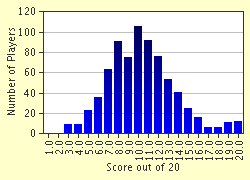Quiz Answer Key and Fun Facts
1. When Columbus came ashore he was met by the Arawaks. Which is true of the Arawaks?
2. In 1741 fires of unknown causes broke out in New York, after a difficult winter, where both slaves and the poor had great hardship. Following this there were accusations and trials. What was the result of these trials?
3. Zinn writes "In 1676, seventy years after Virginia was founded ... that colony faced a rebellion of white frontiersmen, joined by slaves and servants, a rebellion so threatening that the governor had to flee the buring capital of Jamestown, and England decided to send a thousand soldiers across the Atlantic" (Zinn p.39). What event was Zinn talking about?
4. Between 1676 and 1760 how many uprisings took place in the 13 colonies with the intention of overthrowing colonial goverments took place?
5. Which would NOT allow a white male in Connecticut to get out of military service in the American Revolution?
6. In 1851, this woman suggested that women wear pants and a type of short skirt to free themselves from the traditional dress. Can you name her?
7. Following Jackson's election as President which was NOT a state law passed in Georgia, Alabama, or Mississippi related to Native Americans?
8. In an act of civil disobedience, which writer refused to pay the Massachusetts poll tax, citing opposition to the Mexican War? (He later wrote an essay called 'Civil Disobedience').
9. Which of the following is true of Harriet Tubman?
10. In which state did Thomas Dorr in the early 1840s lead a group of people in organizing a "People's Convention", writing a new constitution, and holding unofficial elections?
11. On March 25, 1911 fire broke out in a place of work. While the law said that doors to places of employment could not be locked, the company that operated the factory kept them locked anyway to control the workers. The fire department only had ladders that could reach seven stories. In total, 146 workers died either from being burned alive or from jumping to their deaths trying to escape. What was the name of the company where this took place?
12. Woodrow Wilson cited Germans sinking American merchant vessels as the reason for entering WWI. Which is NOT a reason Zinn questions this as the true motivation for entering WWI?
13. Which was true of the 1920s according to "A People's History of the United States"?
14. Which Senate minority leader, who would later become President, worked to pass the censure resolution against McCarthy?
15. What timeline did the Supreme Court put on the Brown vs. the Board of Education Requirment of desegregation?
16. On March 16, 1968 an extremely brutal act took place. What was it?
17. Who created a pamphlet called Poor Black Woman?
18. During the "People's Bi-Centennial" countercelebration of the Boston Tea Party what was dumped into Boston Harbor?
19. According to Zinn, which country's government, which the United States was supplying money to, was killing thousands of people each year via "death squads"?
20. In 1998 the US embassies in Kenya and Tanzania were bombed. In Sudan (according to Zinn) what did the United States bomb in return?
Source: Author
triathlonrules
This quiz was reviewed by FunTrivia editor
bloomsby before going online.
Any errors found in FunTrivia content are routinely corrected through our feedback system.

